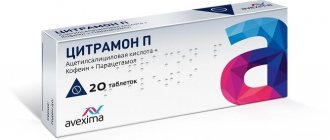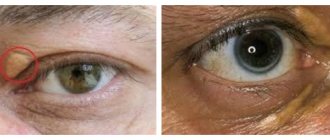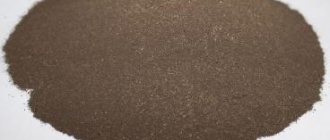Atherosclerosis, which is based on a complex of complex disorders of lipid metabolism, is one of the most important risk factors for the development of vascular accidents. Closely associated with it, hypercholesterolemia is detected in more than 60% of hospitalized patients aged 30–69 years [1]. Therefore, drugs that help normalize lipid parameters are in steady demand in pharmacies. In all likelihood, it will only grow: after all, the average age of the Russian population is growing and the number of patients with cardiovascular diseases is increasing. And in order to conduct high-quality pharmaceutical consultations, it is important for primary care providers to remember how lipid-lowering drugs work, what side effects they exhibit, and what the client must be warned about with the appropriate prescription.
The beginning of the beginning: classification of lipid-lowering drugs
First of all, let’s remember what lipid-lowering drugs are currently available in pharmacies.
Table 1: Lipid-lowering drugs
| Drugs that lower blood levels primarily of cholesterol (LDL) | ||
| Cholesterol synthesis inhibitors (3-hydroxy-3-methylglutargyl coenzyme A reductase inhibitors, or statins) | atorvastatin, lovastatin, pitavastatin, pravastatin, rosuvastatin, simvastatin, fluvastatin | |
| Inhibitors of cholesterol absorption from the intestine | ezetimibe | |
| Drugs that lower blood levels primarily of triglycerides | Fibric acid derivatives, or fibrates | gemfibrozil fenofibrate |
| Drugs that lower blood cholesterol (LDL) and triglycerides (VLDL) | Nicotinic acid | |
Lipid-lowering drugs normalize the lipid profile through various mechanisms. Among them [1, 2]:
- the most common mechanism of action: activation of lipoprotein uptake due to stimulation of LDL receptors located in the liver;
- blocking the synthesis of lipids and lipoproteins in the liver;
- inhibition of the absorption of cholesterol and bile acids from the intestine;
- activation of cholesterol catabolism, including its conversion into bile acids;
- stimulation of the activity of the enzyme that breaks down lipids - lipoprotein lipase of the vascular endothelium;
- blocking the synthesis of fatty acids in the liver and their release from adipose tissue (inhibition of lipolysis);
- an increase in the level of antiatherogenic HDL in the blood.
Let's take a closer look at how representatives of various subgroups of lipid-lowering drugs work and what features they have.
Vitamins and herbal medicines
Narrowing of the blood vessels of the brain and coronary arteries leads to increased deposition of lipids on the walls.
Nicotinic acid has a vasodilating effect, eliminates vascular spasms, and reduces the rate of clogging of arteries with cholesterol.
Most often, nicotinic acid is prescribed in injections, but there are tablet forms - Niceritol, Enduracin, Acipimox.
At the same time, the risk of blood thickening and the appearance of blood clots is reduced, thereby minimizing the risk of death from a heart attack or stroke. Usually, a 2-week treatment several times a year is enough to keep cholesterol normal in mild cases. In case of advanced vascular condition, treatment is supplemented with statins or fibrates.
In folk medicine, it is often recommended to take garlic for blood lipids. There are Alisat garlic tablets (RUB 120), which have a range of beneficial effects:
- reduce blood thickness;
- help plaques and blood clots dissolve;
- normalize cholesterol and blood pressure;
- reduce the risk of diabetes and stroke.
You need to take 1 tablet twice a day, for a course of 3 months. If there is a risk of bleeding, use should be discontinued.
Pharmacology of statins
Statins are first-line drugs for the treatment of hyperlipidemia, which have the highest lipolytic activity among all subgroups of lipid-lowering drugs [3, 4]. The first representatives of statins were obtained from mold cultures. We are talking about lovastatin - it was isolated in 1980 from the mold Aspergillus terreus
. Lovastatin began to be used in clinical practice in 1987, marking the beginning of the era of the most powerful lipid-lowering drugs [5].
Subsequent drugs in this subgroup are of semi-synthetic (simvastatin, pravastatin) and synthetic origin (fluvastatin, atorvastatin, rosuvastatin).
Mechanism of action of statins
Statins reduce the synthesis of cholesterol and very low-density lipoproteins (VLDL) in the liver by inhibiting the activity of a key enzyme involved in the early stage of cholesterol synthesis ( HMG-CoA reductase - editor's note).
). As a result, a chain of changes occurs [3]:
- cholesterol levels decrease in liver cells;
- cholesterol synthesis increases in liver cells for several hours (compensatory);
- for several days, the number of specific receptors that bind LDL and reduce their concentration in the blood increases on the hepatocyte membrane;
- the number of liver lipoprotein receptors increases compensatoryly;
- the concentration of LDL, VLDL, and apolipoprotein decreases; triglyceride levels decrease to a lesser extent;
- HDL content increases.
It is important to note that the lipid-lowering effect of statins appears quickly, within approximately a week after the start of therapy.
In addition, statins are characterized by non-lipid pleiotropic effects, among which the following should be highlighted:
- improvement of vascular endothelial function;
- suppression of inflammatory activity in the vascular wall;
- suppression of LDL oxidation processes;
- depletion and stabilization of the core of the atherosclerotic plaque;
- inhibition of thrombus formation;
- anti-inflammatory effect.
Statins also have a preventive effect against cardiovascular diseases. They have been proven to reduce the risk of mortality from major cardiovascular events (myocardial infarction, stroke) and the development of cardiovascular diseases [4]. A Cochrane review suggests that statins reduce the risk of recurrent stroke [4].
Resistance does not develop to statins (as well as to lipid-lowering drugs of other subgroups).
The safety of statins in pregnancy has not been studied, so it is important for women of reproductive age to use effective contraception during treatment. During lactation, statins are also contraindicated [5].
Side effects
As a rule, statins are well tolerated, but negative reactions when taking them are possible. Among the most common are dyspeptic symptoms (nausea, vomiting, abdominal pain, diarrhea, loss of appetite), neurological (dizziness, irritability). While taking statins, muscle pain and associated muscle weakness may be felt: they occur in 10% of patients [4].
A rare serious side effect of statins is the breakdown of muscle tissue called rhabdomyolysis. It manifests itself with a combination of unfavorable factors, for example, taking statins along with the use of immunosuppressants [4].
What should I warn the client about?
Statins quickly have a lipid-lowering effect, however, even if tests show normalization of lipid levels, the drugs cannot be discontinued without a doctor’s recommendation. When they are discontinued, lipid levels often rise again. The drugs are used for a long time, sometimes for life.
Which brand of cholesterol pills is better to choose?
There are different medications for lowering cholesterol; they are produced by various pharmacological companies. The rating describes the manufacturers of the best cholesterol pills that are worth paying attention to:
- Teva is a pharmaceutical company in Israel that has been creating medicines since 1901. Its funds are aimed at treating diseases and preventing various pathologies. The composition contains natural and safe ingredients, each capsule and tablet has a good dosage.
- Pierre Fabre Medicine Production is a French pharmaceutical company that produces drugs for treatment and prevention. Tablets are created after conducting scientific research and determining their effectiveness.
- Lekpharm is a pharmaceutical company that creates medicines using modern technologies. Certified equipment is used in production; only professionals work in the company.
- Novartis is a pharmaceutical corporation that creates tablets that are supplied to many countries in Europe and the USA. The company was founded in 1996 in Switzerland. It produces medicines for the treatment of diseases associated with various systems and organs.
- Aktavis is a pharmaceutical company that produces tablets for various diseases related to the cardiovascular system. Medicines are supplied to different countries; more than 60 countries around the world sell medicines under the brand.
- Sandoz is a pharmaceutical company that creates medicinal tablets for the treatment of infectious, respiratory, and cardiovascular diseases. Medicines improve the functioning of the nervous and cardiovascular systems and have a rapid effect.
- Pfizer is an American pharmaceutical company that has been creating medical products since 1997. The main headquarters is located in New York, the research center is in Groton. The company creates more than 20 items of different release forms.
- Dr. Reddy’s is an Indian company that, since 2015, has been creating a large volume of medicines aimed at treating various diseases. The company itself was founded in 1984; it works with international markets and supplies medicines to developed countries.
- Pharmascience Inc. is a company founded in 1983, it creates medicines from various fields. Medicines are created not only for treatment, but also for the prevention of viral diseases. In total, the company created more than 40 types of medicines.
- Evalar is a pharmaceutical company that creates dietary supplements for the treatment of diseases and prevention. The preparations contain only natural herbal ingredients; the products are available in different forms.
Drugs that inhibit the absorption of cholesterol in the intestine
The first and so far only drug in this subgroup was ezetimibe. It works primarily in the villous epithelium of the brush border of the small intestine.
The mechanism of action is based on inhibition of the cholesterol transporter in intestinal enterocytes. This reduces cholesterol absorption by approximately 50%. The level of LDL and VLDL also decreases by 20–25% and the HDL content slightly increases.
The maximum effect of the drug develops after two weeks. When used as monotherapy at a standard dose of 10 mg per day, ezetimibe provides a reduction in LDL concentrations by no more than 17–18%, so it is more often used in combination with statins [3].
Side effects
Generally, ezetimibe is well tolerated. In rare cases, it can cause changes in the level of liver enzymes, as well as back pain, arthralgia, and weakness [1, 3].
What should I warn the client about?
If your doctor has prescribed a combination of ezetimibe and a statin, it is important to follow the recommendations and take both drugs to achieve optimal lipid-lowering effects.
Statins - first generation drugs
These cholesterol pills are cheap, but their effectiveness is high. They block enzymes, without which cholesterol cannot be formed. There are several generations of drugs in this group, which differ in active substances.
The first generation of statins is represented by drugs based on simvastatin. It has been well studied and its price is the lowest. Below are the main statins and their costs.
| Drug name | Price for 28-30 tablets, rub. |
| Simvastatin Zentiva | 230 |
| Simvastatin Alkaloid | 80 |
| Zokor | 720 |
| Basilip | 520 |
| Simwahexal | 420 |
| Simgal | 470 |
| Simlo | 270 |
| symbol | 180 |
As you can see, there are very cheap medications, and all of the statins on the list are analogues. Regular consumption reduces cholesterol. The dose is chosen individually, usually starting at 10 mg/day.
Second generation drugs are based on fluvastatin. The best of them is Leskol Forte, however, its price is very high - 2800 rubles / 28 tablets. The action of the product is prolonged and mild, so it is often recommended for diabetics. It cannot be used to treat peanut allergies or biliary tract diseases.
Fibrates
Fibrates are the first effective hypotriglyceridemic drugs that began to be used for the treatment of atherosclerosis. There are two generations of this subgroup: the first includes clofibrate, which is currently not registered due to its low safety profile. There is evidence that long-term use of clofibrate increases mortality not associated with cardiovascular diseases, and also increases the risk of developing tumors of the digestive tract and liver [1].
Today, only second-generation fibrates with a favorable safety profile are used: fenofibrate, bezafibrate, ciprofibrate and gemfibrozil.
All second-generation fibrates are similar in effectiveness, but the drugs differ in pharmacokinetics. The longest-acting drugs are fenofibrate (20–25 hours) and ciprofibrate (more than 48 hours) [1]. However, the maximum clinical effect develops only after several weeks of use. So, for gemfibrozil this figure is at least 4 weeks.
The mechanism of action of fibrates is still not completely clear [5]. Recent studies indicate that many of their effects are associated with interaction with peroxisome proliferator-activated receptors (PPARs). They play an essential role in the regulation of gene transcription. Fibrates bind to PPARs, which are expressed primarily in the liver and brown adipose tissue, and, presumably, through PPAR-mediated stimulation of fatty acid oxidation, provide [4]:
- a 20–50% reduction in triglyceride levels is a class effect of fibrates;
- decrease in the level of VLDL, LDL;
- inhibition of cholesterol synthesis, which leads to a decrease in its level by an average of 10–15%;
- increase in HDL concentration (with prolonged use).
While taking fibrates, atherosclerotic plaques in the walls of blood vessels also thicken, which leads to an increase in their lumen. In addition, drugs in this group have an antiplatelet effect.
Fibrates are prescribed long-term, usually for several years.
Side effects
Adverse reactions when taking fibrates develop in 2–15% of cases. The most common dyspeptic disorders are nausea, diarrhea; skin reactions (rash). Drowsiness, impaired bile outflow, and myositis occur less frequently.
What should I warn the client about?
It is better to take fibrates in the morning during meals, since the synthesis of lipoproteins rich in triglycerides occurs more intensely in the morning.
Who needs to take statins?
Informing what statins are, advertising stories and instructions for the drugs indicate that statins are effective drugs for lowering cholesterol, which significantly improve the overall quality of life, and also reduce the likelihood of developing strokes and myocardial infarction . Accordingly, taking these pills every day is a safe method to lower your cholesterol levels.
But in fact, until today there is no accurate information about whether treating patients with such medications is really so safe and effective. After all, some researchers claim that the potential harm and side effects outweigh the benefits of statins as a prophylactic drug used to prevent cardiovascular diseases. Experts are still arguing whether it is worth taking statins, weighing the pros and cons. Doctors' forums almost always contain debates on the topic “Statins - pros and cons.”
But, nevertheless, there are certain groups of patients for whom statins are required.
The latest generation statins must be used:
- for the purpose of secondary prevention after a stroke or heart attack ;
- for reconstructive surgical interventions on large vessels and the heart;
- in case of myocardial infarction or acute coronary syndrome ;
- with ischemic disease with an increased likelihood of stroke or heart attack.
That is, anticholesterol drugs are indicated for coronary patients in order to increase their life expectancy. In this case, to reduce side effects, the doctor must select the appropriate medicine and monitor biochemical parameters. If there is a 3-fold increase in transaminases, statins are discontinued.
The advisability of prescribing medications from this group for such patients is questionable:
- at low risks;
- for diabetes mellitus ;
- in women before menopause.
If statins are prescribed to people with diabetes, they may need additional tablets to lower their blood , since statins raise their blood sugar in such patients. Medicines to lower blood sugar should only be prescribed and their dosage adjusted by a doctor.
Currently in Russia, the treatment standards for most cardiac pathologies include the use of statins. But although medical prescription reduces mortality, this is not a prerequisite for prescribing drugs to all people with coronary artery disease or hypertension. They should not be used by anyone over 45 years of age or by anyone with high cholesterol levels.
It is important to consider the compatibility of these drugs with other drugs.
If necessary, together with anticholesterol drugs, the doctor prescribes other drugs for the treatment of cardiovascular diseases: Diroton , Concor , Propanorm , etc.
Diroton (active ingredient - lisinopril ) is used to treat arterial hypertension.
Concor (active component - bisoprolol hemifumarate ) is used for the treatment of arterial hypertension , heart failure, angina pectoris .
Nicotinic acid derivatives
Niacin, or nicotinic acid for atherosclerosis, is one of the most “deserved” drugs that has been used to treat hyperlipidemia since 1955 [6]. It acts only after being converted into nicotinamide in the body and subsequent binding to the coenzymes codehydrase I and codehydrose II, which transfer hydrogen.
The distinctive effects of nicotinic acid compared to other lipid-lowering drugs are the ability to significantly increase HDL levels, as well as a vasodilating effect.
The lipid-lowering effect of niacin requires higher doses than necessary for the vitamin effect to occur. On average, the dose of nicotinic acid as a lipid-lowering agent is 100 times higher than as a vitamin [1].
The mechanism of action is based on inhibition of triglyceride lipolysis in adipose tissue. Niacin reduces the synthesis of VLDL, reduces the level of total cholesterol, LDL, triglycerides and increases the content of HDL by 15-30%. The drug also has antiatherogenic properties [5].
Along with the hypolipidemic effect, nicotinic acid dilates small vessels (including cerebral vessels), improves microcirculation, and has a weak anticoagulant effect.
Triglyceride levels begin to fall within 1–4 days after starting to take nicotinic acid, while cholesterol levels drop on days 5–7 of using the drug.
Side effects
Along with quite powerful lipid-lowering properties, niacin is poorly tolerated. Up to 40% of patients refuse to take it due to side effects [6]. One of the side effects associated with low compliance is a feeling of heat and flushing due to the release of prostaglandins. This effect can be reduced by gradually titrating the dose and administering acetylsalicylic acid at a dose of 250 mg half an hour before taking nicotinic acid.
With the use of high doses of nicotinic acid (usually 2–6 g per day), skin itching and dyspepsia—vomiting and diarrhea—may occur. There is a risk of peptic ulcers, liver dysfunction, and increased levels of glucose and uric acid in the blood. Due to the possible development of hyperuricemia, nicotinic acid is contraindicated in gout. It is also not recommended for use in diabetes mellitus and metabolic syndrome [1, 3].
Due to the poor tolerance of nicotinic acid, its derivatives were synthesized with a higher safety profile. Xanthinol nicotinate has become one of the most prescribed.
What should I warn the client about?
Niacin, due to its vasodilating effect, can potentiate the effect of antihypertensive drugs and lead to a sudden decrease in blood pressure, so it should be used cautiously during antihypertensive therapy, after consultation with a doctor [7].
Nicotinic acid is recommended to be taken with meals.
Other drugs
After a thorough examination and identification of slightly elevated cholesterol, the doctor may recommend taking medications based on Omega-3 and lipoic acid. The protection of blood vessels from harmful fats by these substances has already been proven. They are sold in the form of dietary supplements (Tykveol, Omega Forte, Sito Pren, Policosanol and others). Such drugs are inexpensive - 50-600 rubles. They can also be used for the prevention of hyperlipidemia from the age of 30-35 years.
Other cholesterol medications are listed here:
- Ezetemibe
(1400 rub.). The drug prevents cholesterol from being absorbed in the small intestine. Due to this, the level of the substance in the blood also returns to normal. The medicine is considered modern, effective, and has a different principle of action. It also enhances metabolism, improves blood circulation, and removes toxins. - Probucol
. Cholesterol in plasma after taking Probucol decreases due to increased catabolism of harmful fatty fractions in the intestines. At the same time, the drug suppresses the early stages of cholesterol synthesis in the body and prevents the absorption of dietary cholesterol.
These drugs are taken in courses of 4 months, after which they take a break for a month. Thanks to the improvement of fat metabolism, the functioning of blood vessels is normalized, and blood pressure also returns to normal.
Combined lipid-lowering therapy
In some cases, doctors prescribe a combination of lipid-lowering drugs with different mechanisms of action. The most common indication is severe hyperlipidemia. Most often, fibrates are used in combination with statins. Nicotinic acid is combined with other hyperlipidemic drugs very carefully, under the supervision of a physician [6].
If a two-component treatment regimen is ineffective, three drugs can be used at once, for example, statins, cholesterol absorption inhibitors and nicotinic acid [3].
Sources
- Kharkevich D.A. Pharmacology. 10th ed. M.: GEOTAR-Media, 2010. – 908 p.
- Morris Brown, Peter Bennett. Clinical Pharmacology 11th Edition, 2012.
- Clinical pharmacology and pharmacotherapy: textbook. – 3rd ed., add. and processed / ed. V.G. Kukesa, A.K. Starodubtseva. – M.: GEOTAR-Media, 2012. – 832 p.
- Bardal SK, Waechter JE, Martin DS Applied pharmacology. – Elsevier Health Sciences, 2011.
- Goodman and Gilman's The Pharmacological Basis of Therapeutics, Twelfth Edition
- Janashia P.Kh. et al. Drug lipid-lowering therapy. Medi.ru URL: https://medi.ru/info/3448/ (access date 05/29/2020).
Rating of cholesterol pills
The rating of medications that are aimed at treating and preventing high cholesterol was based on the results of comparative tests, as well as after analyzing the properties and composition of each drug. Additionally, customer reviews were also taken into account, as well as the opinions of doctors who reviewed all medications. The rating was also determined by checking each drug individually; during the check, we looked at the following nuances:
- Compound;
- Release form;
- Dosage;
- Price;
- Action;
- Side effects;
- Contraindications.
Testing each drug allowed us to rank the best cholesterol-lowering pills. They are characterized by rapid action, do not cause negative manifestations, and quickly neutralize the problem.
The best drugs for dizziness









